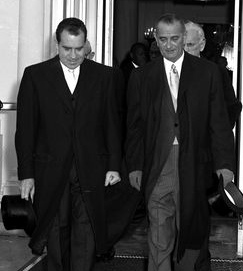
The Vietnamese were every bit as determined, clever, and innovative as the Americans-maybe more so. To understand the war from the other side, John Prados offers The Blood Road: The Ho Chi Minh Trail and the Vietnam War (NY: John Wiley, 1999). Johnson once commented that Airmen couldn’t hit an outhouse in North Vietnam without his approval. When they were struck, it was a decision often made by the President himself. Targets such as bridges, rail lines, marshaling yards, power plants and steel mills were also off-limits most of the time. Fuel sites and storage facilities were seldom targeted.

Also off-limits: Ships in the port of Haiphong delivering deadly weapons-along with tons of additional military equipment and precious fuel-many were crewed by Russians, Chinese, or neutrals. Hampered by restrictions, USAF could not establish air superiority over North Vietnam, driving up the costs of each strike mission. aircraft was downed by a SAM three months later-and 109 more SAM shootdowns would follow by the end of the war. When surface-to-air missile (SAM) sites were established in the north in April 1965, they too were declared off-limits-one of Johnson’s advisers opined the missiles were there simply to boost the morale of the North Vietnamese and would not be used.

Strict rules of engagement (ROE) meant the Air Force would not strike North Vietnamese airfields-Washington saw this as a provocative escalation-so the deadly MiGs could not be attacked while on the ground and vulnerable.


 0 kommentar(er)
0 kommentar(er)
